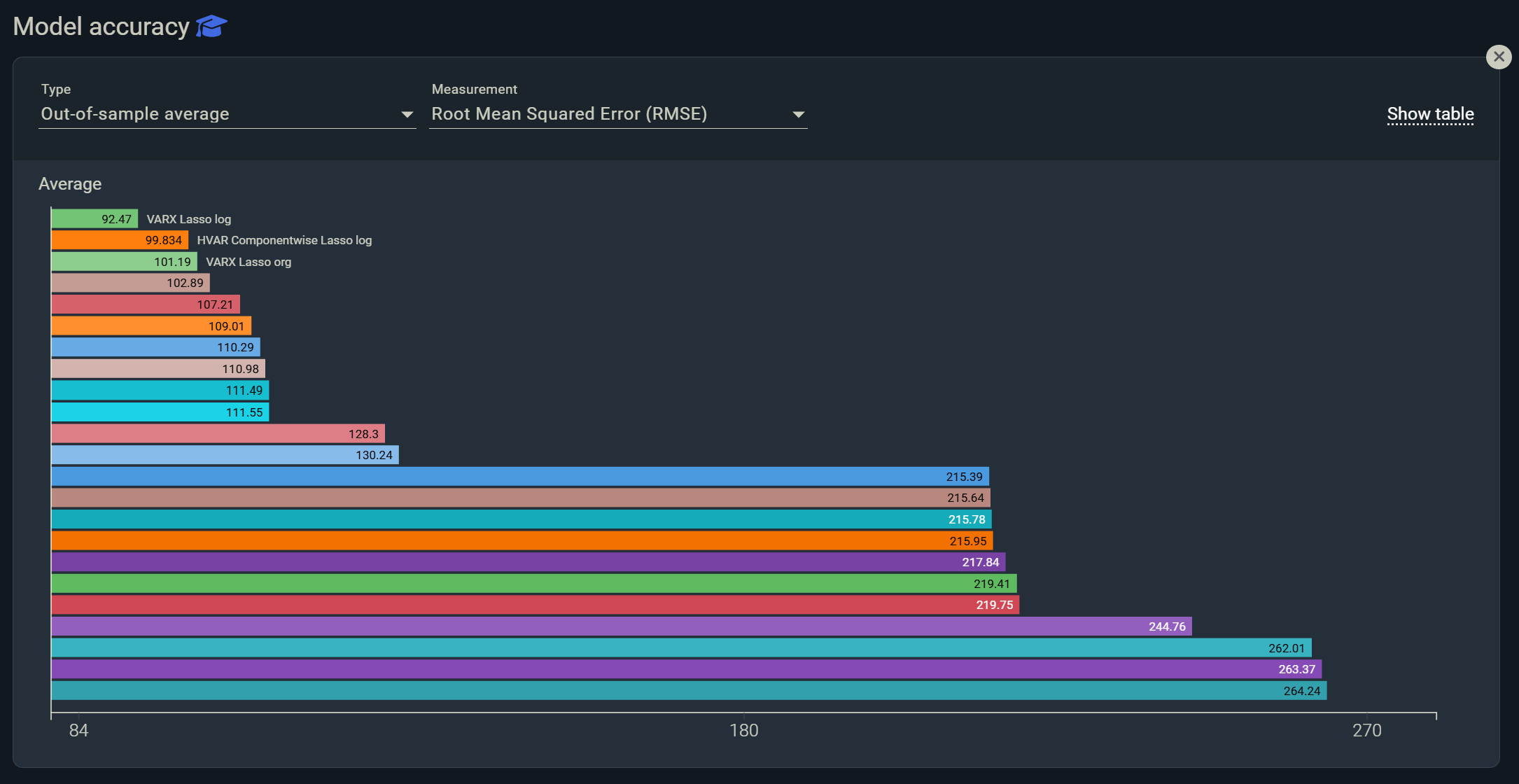As one of the world's largest and world-leading automotive manufacturers, it was key for them to ensure that they could quickly adapt production capacity to capture trend shifts in the market.
They knew the way forward was in generating accurate forecasts of their aggregated sales volumes. Forecast results they could rely on to make both strategic and tactical moves.
Challenges
The automotive manufacturer's primary concern was to ensure that they could quickly adapt and optimize production capacity to meet market trend shifts.
To do so, they required accurate forecasts of their aggregated sales volumes. However, this was not the case. Their current method of forecasting, not unlike other automotive players, is built primarily in Excel. The absence of statistical methods when identifying leading indicators resulted in irrelevant indicators being selected, which translated to poor forecast accuracy.
What did they want to achieve?
01 Minimize forecast error margin
02 Identify new market drivers, evaluate new policies, and their impact on the market
03 Extend coverage of more markets for both demand and production
This gave the manufacturer enough time to adjust production before a trend shift, resulting in significant savings when the market went down and the ability to meet demand when the market went up.
Here were the results:

Improved forecast accuracy
By implementing best practices through all stages of the forecast process, the manufacturer achieved a double-digit MAPE forecast accuracy improvement. A closer look at the forecasted results showed that the overall MAPE comparing Indicio and their internal accuracy error was 4.68% and 7.86% respectively. This meant that there was a forecast accuracy improvement of -40.40%.
How was this achieved? Some models are better than others at forecasting at short, mid and long horizons. Indicio combines all models into one forecast, giving more weight to the best performing models at each step. The manufacturer’s forecast did not apply any forecast models while the methodology used here involved applying 50+ of the latest econometric models, and weighted them into one optimal forecast.
Gained the ability to detect market shifts
They were now able to detect trend shifts on the market 1-2 months earlier than before. This gave the manufacturer enough time to adjust production before a trend shift, resulting in significant savings when the market went down and the ability to meet demand when the market went up.
Aligned across management to production
They successfully established a structured process across all markets and management support was significantly improved.
Successfully identified new and stronger market leading indicators
Historically, the manufacturer was identifying leading indicators through correlations identified in Excel. The problem was that many of the indicators identified did not have a causal effect on the main variable. Indicio uses a Lasso model to test for all the potential combinations of indicators that are determined as most valuable towards predicting future sales, and suggests the optimal group of indicators to use as a basis for forecasting.



